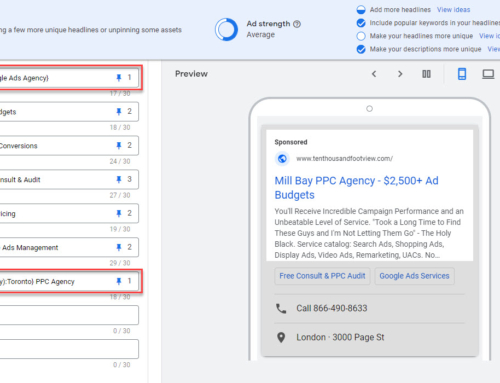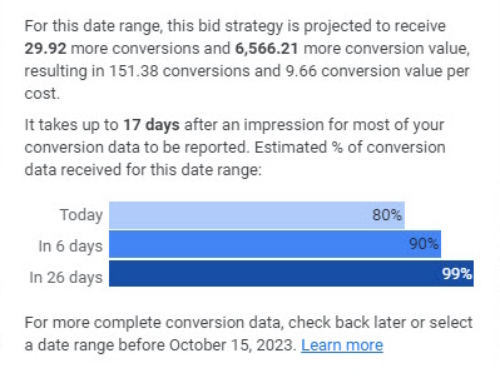Google Ads budget overruns are virtually inevitable. What’s important is keeping them within a reasonable tolerance and/or balancing them out by underspending elsewhere. Avoiding massive short-term, out-of-control spending sprees is paramount to keeping your client or your job!
In this article, and this video, I’ll explain how my agency mitigates budget overruns. As such, we rarely run into these issues, although we did have an oopsie recently. The last time we had a large overrun was 6-years ago, which is an excellent track record considering the number of clients we have on retainer. If you apply our methods to your account, you’ll likely maintain tight control over spending.
Built-in Data Entry Protection
The first mitigation is built right into the Google Ads platform. If you make an abnormally large campaign budget change, e.g., increasing from $100 to $1,000/day, Google will ask you to verify the change before allowing it. Of course, it’s possible to just blindly click and this is really a matter of attention to detail. Also, it’s easy to push large budget changes through the Google Ads Editor, API, a script or custom rule where no such mechanism will check your work.
Still, for most small business users this is a solid start to avoiding budget overruns due to typos.
Checking Your Work
Part of our SOP dictates we always review budget changes in two different ways. The first way is simply by taking your newly updated campaign daily budget and multiplying it by 30.4. Does that give you the monthly budget result you’re looking for? If not, you had better check your math. The second way is by taking the total account budget and multiplying that by 30.4. This this align with your monthly account budget? If not, you should have a closer look at each campaign before proceeding.
Keeping Budgets Reasonable for Target-Based Campaigns
When we audit prospect accounts we frequently find campaigns with budgets that are factors higher than the actual ad spend. For example, a search campaign with a tCPA of $50 that’s only spending about $100/day of a $2,000/day budget. Now everything will remain status quo here, assuming your CPA performance doesn’t suddenly and dramatically improve, you don’t have technical problems with conversion tracking, or you make a seemingly small mistake such as increasing the tCPA substantially or switching to Max Conversions. Unfortunately, these things all happen pretty frequently.
And as a result, Google may not only spend the full $2,000/day, but can also spend all the unused budget that’s accrued in the past. Under these circumstances, it’s not unusual to see Google burn through $10,000 literally overnight. Pretty bad when you expected to spend around $3,000 here for the entire month.
Fortunately, there is a simple solution to this, and that is to restrict the budget to a reasonable amount above your typical ad spend. At our agency, we aim for 25%-50% above spending, depending on how volatile spending typically is, along with a few other factors. In the case above, we’d bring the budget down to $125-150/day.
Daily Account Health Check
At our agency, we manually check spending, impressions, clicks, conversions, and other major KPIs for all accounts first thing every morning. Our tool of choice is a custom script / Google Sheet containing all accounts that shows performance for yesterday vs. the day before, with additional sheets for “to date” week over week and month over month numbers. Large, unexpected changes in spending stand out like a sore thumb. This can help us catch overspending (also underspending) very early before the problem gets out of hand. Besides keeping a handle on budgets, this will also identify problems like credit card payment issues, i.e., low or zero daily impressions, broken conversion tracking, and more. It’s an indispensable “multitool” for us.
Google Ads Budget Management as Part of Optimization
If you don’t include a budget/spend review as part of your regular optimization process you are dropping the ball. We always look at WTD and MTD campaign and account pacing against the budget and review each campaign specifically. Are campaigns spending less or more than expected? Why is that and what actions do we need to take to right the ship?
Avoiding Dormant Campaign Overruns
Many advertisers don’t understand that paused campaigns don’t spend but still accrue unspent budget. As such, when you turn them back on Google can suddenly “catch-up” in a matter of a day or two. Be mindful if you pause a campaign for a few weeks that typically spends it’s full budget each day, you’ll very likely see two weeks worth of spending right after you turn it back on. If you don’t want this to happen you can make a small campaign budget adjustment to reset the 30.4 day budget clock.
Account Level Budgets
Setting an account level budget is a great way to place a hard monthly limit on Google Ads spending. But this option is not without issue.
First, if you hit your budget partway through the month your campaigns will be suspended until the 1st of the following month. This sounds good, as you will achieve the goal of not exceeding your hard budget cap. However, this also means you may end up with a few days at the end of some months where your campaigns aren’t running.
That’s a big problem for advertisers that expect a certain volume of lead or sales flow for their business. Often it’s better to spend a little over budget to avoid having your sales staff twiddle their thumbs for a few days.
Also, only account admins or payment manager users can set and/or update account level budgets. This means it’s not a process your agency or PPC manager can handle.
What we’ve seen happen many times is that the client asks us to increase some campaign budgets but then forgets to update the account budget. As such the 24th of the month comes around and we experience an “outage” before catching it the next morning and notifying the advertiser. In a worst case scenario, the account admin isn’t around and we’re stuck for several days with suspended campaigns.
For this reason we recommend to clients that want to use account level budgets to:
a) register at least two staff users that can adjust account budgets
b) set account budgets to around 25% higher than expected ad spend
Importantly, most advertisers have no idea this function exists. When we do suggest it to clients they often find they have trouble maintaining it and give up after a few months of various issues cropping up.
Using Rules and Scripts to Manage Budgets
For those that use these methods, rules are generally implemented to simply stop a campaign if it has exceeded a certain amount of ad spend in a given period. On the other hand, scripts are generally used for pacing campaigns and run throughout the day to stop campaigns when they’ve hit the daily ad spend goal.
The problem with rules is that frequent budget changes necessitate constantly updating the rules. And it’s easy to make a calculation error or forget about the rule and have campaigns stop unexpectedly. Also, the rule actually pauses campaigns, which takes them off the radar for PPC managers. If you don’t have a rule to turn them back on, your PPC manager might forget about the campaign completely and only realise some time later it hasn’t been running.
As for scripts, constantly pausing and unpausing campaigns messes with Google’s automated bidding and budget management, and that is never good for performance. It’s really not a good way to control daily spending as Google spends more or less for a very good reason, to optimize for changes in supply and demand and to spend more when there are more likely going to be conversions.
For these reasons we don’t use these tools at our agency.
Clear Written Communications with Clients
Whether you’re managing campaigns for a client or somebody you report to internally, you should be getting your budgets in writing. Having this documented may avoid a “he said she said” situation later on. When clients give us new budgets during a meeting we always follow up with an email stating the new budgets and asking for verification. If your client or manager typically plays fast and loose you should also state that you won’t make any changes until those are confirmed. This sets an expectation that you’re not moving ahead if you don’t hear from them.
One thing we used to see happen is a client will give us an account level budget and then later ask for increases on specific campaigns. At the end of the month they’d be surprised that we’ve spend 50% more than the previous account budget, having assumed we would maintain that by cutting budgets in other campaigns.
Make sure everybody is always aware of both individual campaign budgets and total account budget when changes are made.
Summary
Google Ads budget overruns can spell disaster for your ads account, client relationship, or severely hurt your chance for that big promotion. There is no 100% foolproof way to prevent this from happening, but there are many mitigations than can substantially reduce the risk. Follow the recommendations in this article and the video to dramatically reduce the chance it’ll happen.






